Autumn Trip to the Japanese Mountains
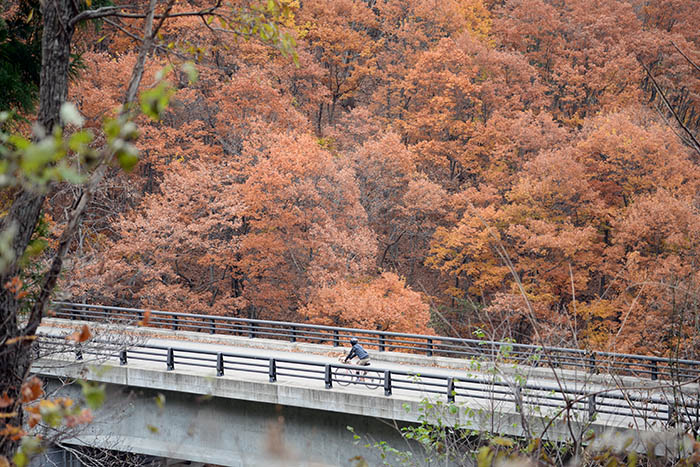
During a recent trip to Japan, we went on a short trip to the Aizu mountains in northern Honshu (Japan’s main island). It was a beautiful day, and the famous kouyou (‘autumn red leaves’) were at their best.
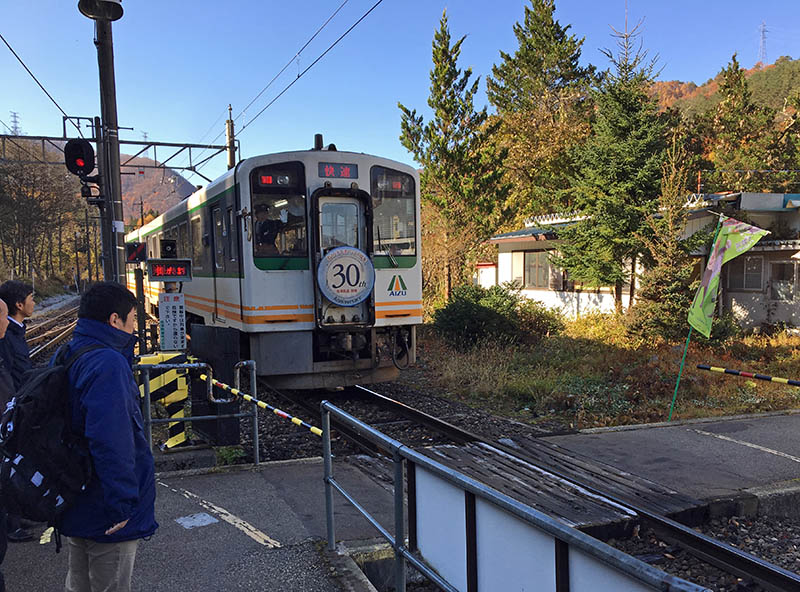
Like most rides in Japan, we started by taking the train. A Shinkansen bullet train whisked us a few hundred kilometers northward, then we took a small train into the hills.
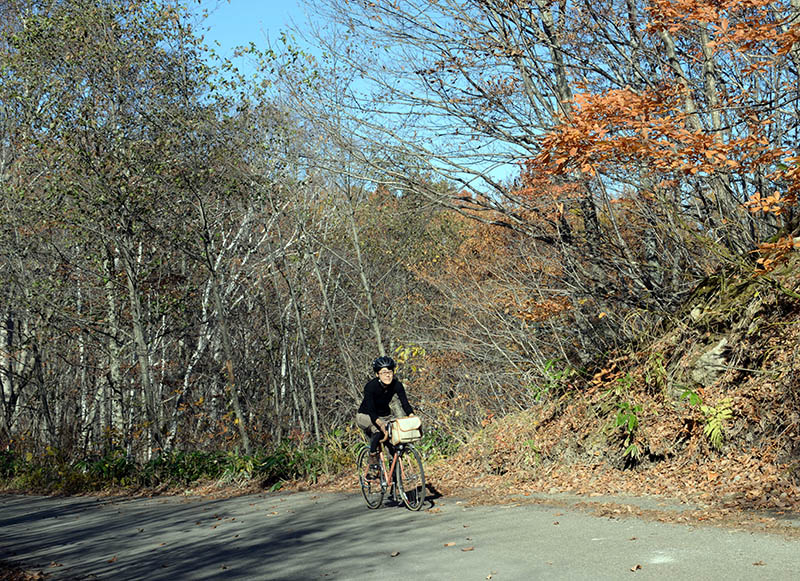
We assembled our bikes, ate a late breakfast, and headed into the mountains on a small road that meandered up the slopes. There was no traffic at all. The sunlight painted the road surface into a dappled pattern of light and shade. It was a wonderful day for a ride.
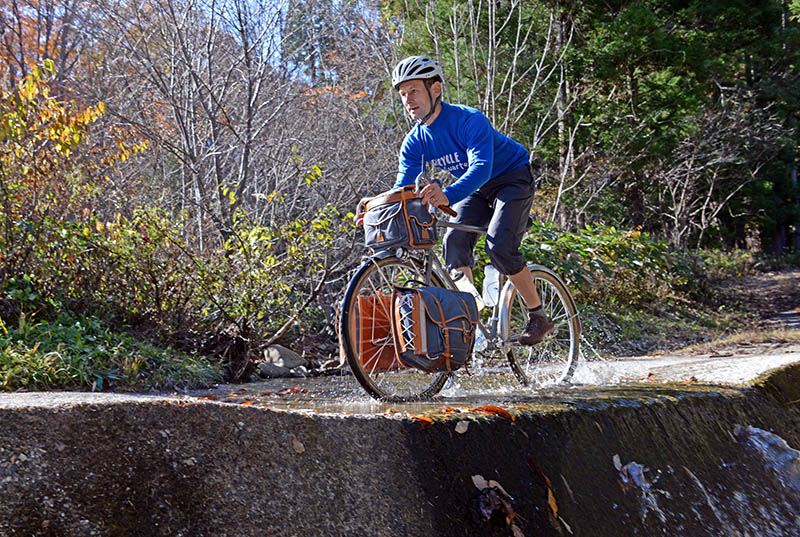
With plenty of time, we explored side paths like this one that forded a creek. We climbed higher and higher until we reached a small pass. When we checked the time, we realized that we had to speed up a little if we wanted to reach our destination before dark.
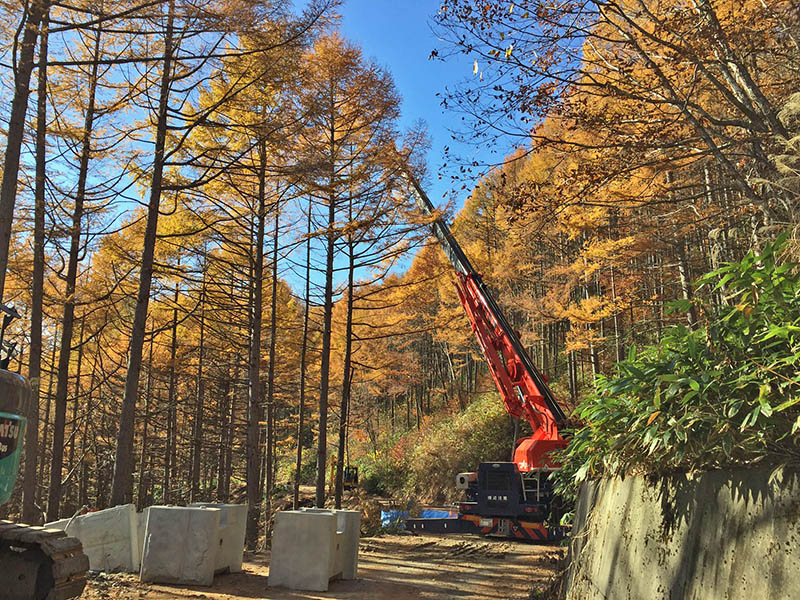
We started zooming down the descent, but after a few turns, the road ahead was blocked. A recent typhoon had caused numerous washouts on the roads of this area. We had been able to pass a few, but here workers were installing concrete shoring. We had to turn around and retrace our steps, all the way back to the train station!
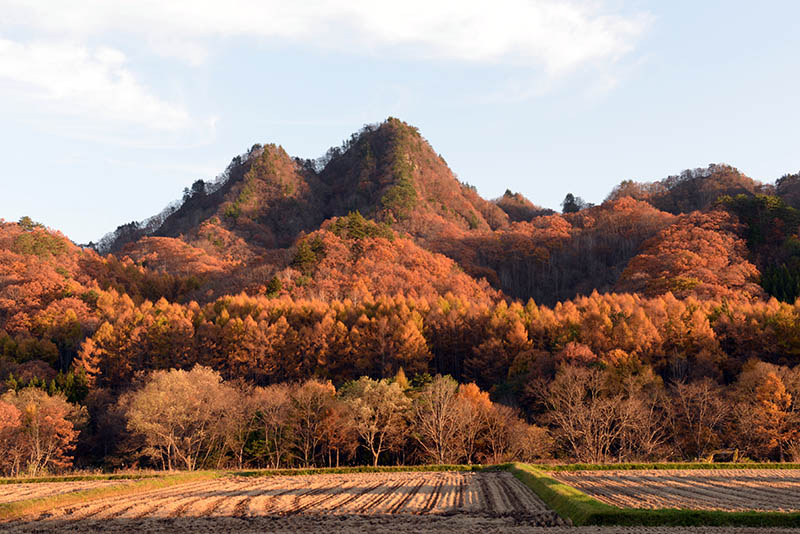
It wasn’t a huge loss, because the main road was beautiful, too. The rice fields in the valley had been harvested, and the hillsides were covered in red colors. A chill in the air betrayed that it was autumn, but with the right clothing, cycling was very pleasant.
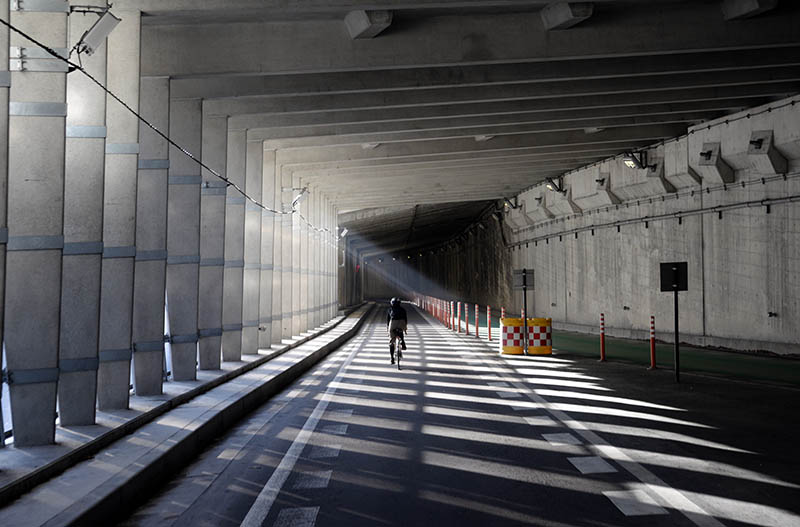
From time to time, dark tunnels swallowed us, until we emerged into snow galleries that created a beautiful light in the afternoon sun.
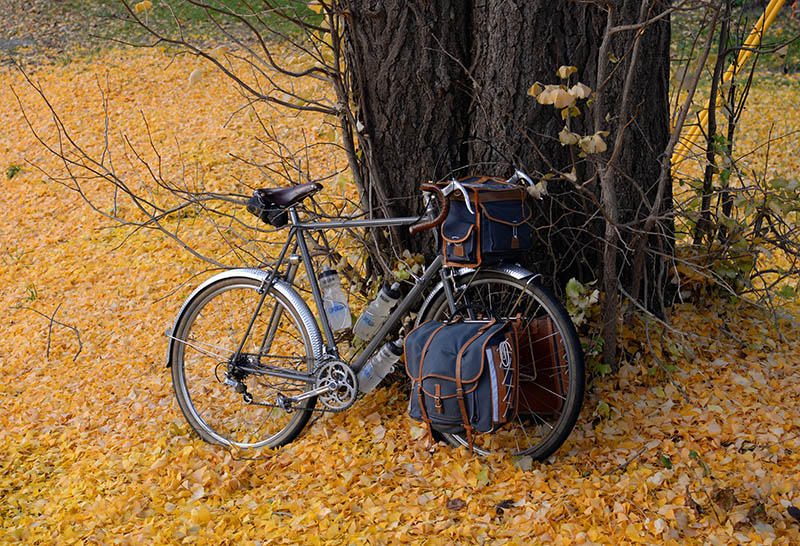
In one village, a huge Gingko tree had dropped its leaves, coloring the ground in vivid yellow.
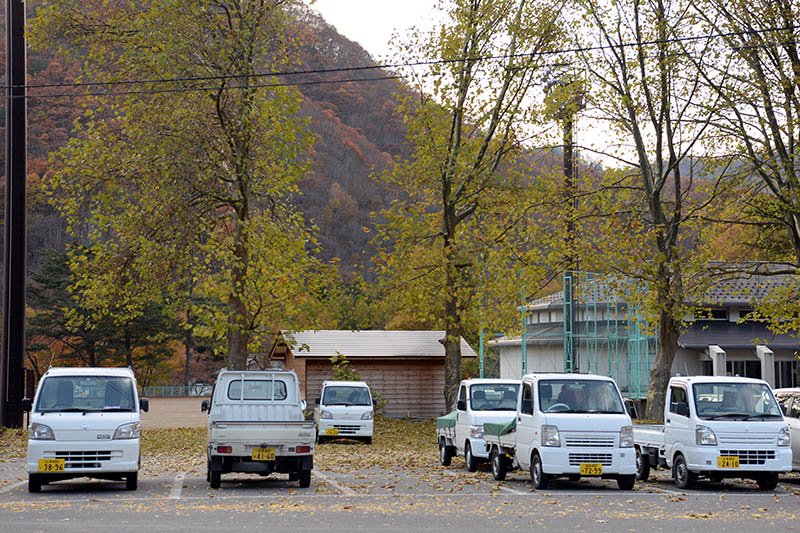
Natsuko couldn’t understand why I took a photo of the nearby parking lot. For her, this is a normal scene. The pickup trucks of rural Japan are small minitrucks. They are less menacing on the road than their North American counterparts. I suspect the diminutive size of the vehicles is one reason why Japanese rural drivers are so friendly towards cyclists. This makes cycling in the Japanese mountains very pleasant.
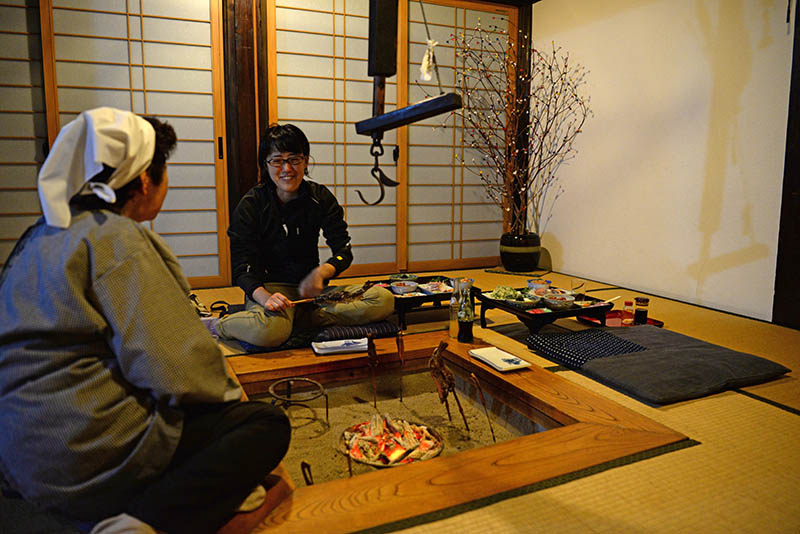
Darkness had fallen when we reached our beautiful ryokan (inn). After a hot bath, we enjoyed a traditional meal. We were the only guests that night, so we talked to the owner about the challenges of living in these mountains where typhoons are common, winters are long, and jobs are scarce.
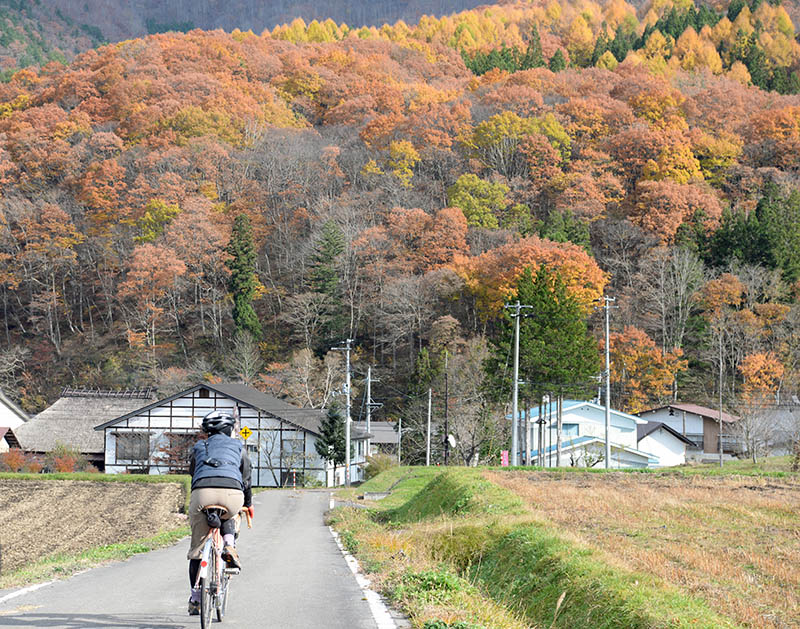 The next morning, we continued our ride on little roads.
The next morning, we continued our ride on little roads.
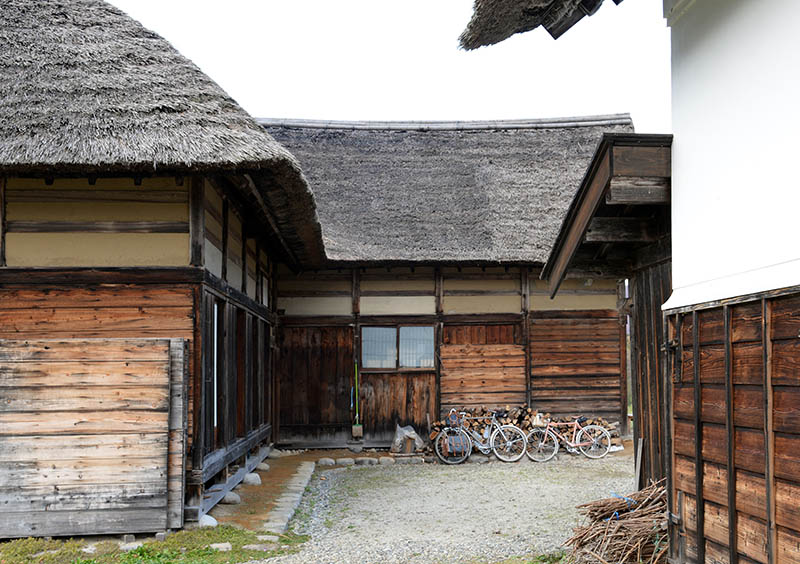 We visited a beautiful old village…
We visited a beautiful old village…
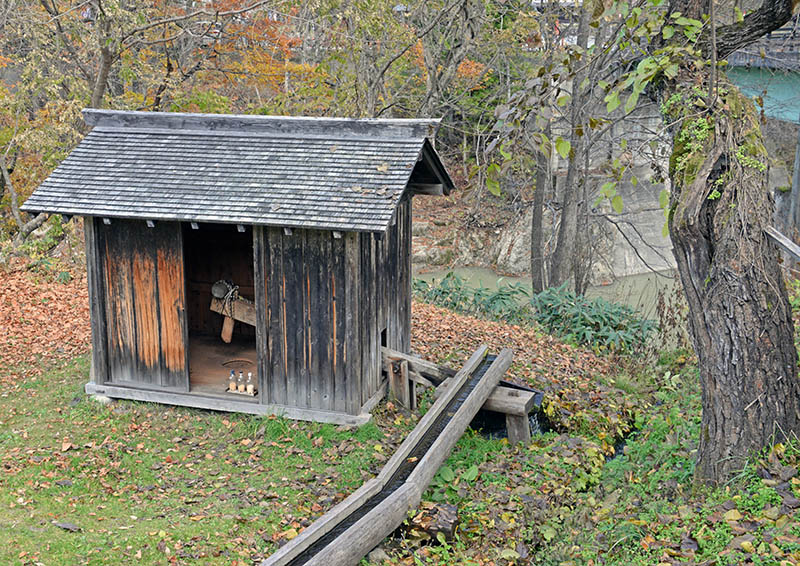
…with a restored grist mill. Every twenty seconds, the bucket under the flume filled with water. The weight lowered the end of the beam, until its angle was so steep that the water spilled out of the bucket. Then the beam dropped back, pushing the round pestle into the hole that held the grain. The periodic sound of “poc … poc … poc” used to accompany life in the villages, and here it still does today.
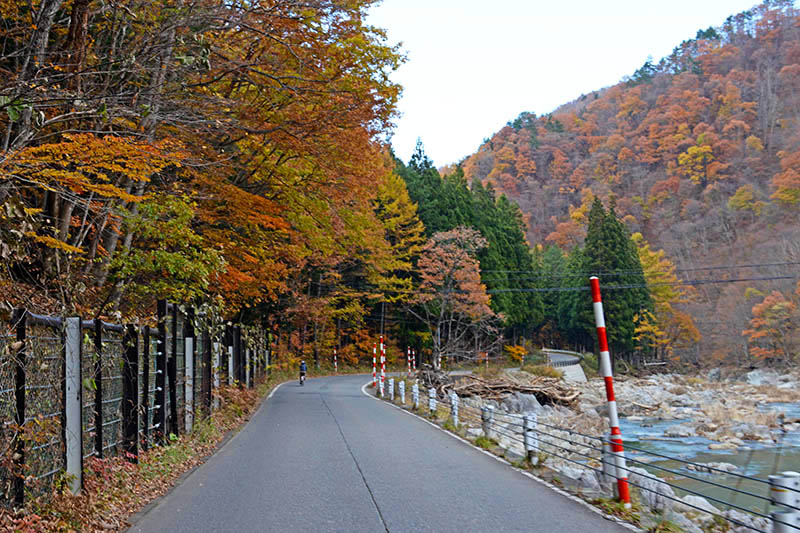
Autumn in northern Japan is a melancholic time. The colors of the trees were incredibly vibrant, but snow poles already lined the road as a sign that winter is coming. On this day, the skies turned from sunny to cloudy, and as we approached the station, it began to rain.
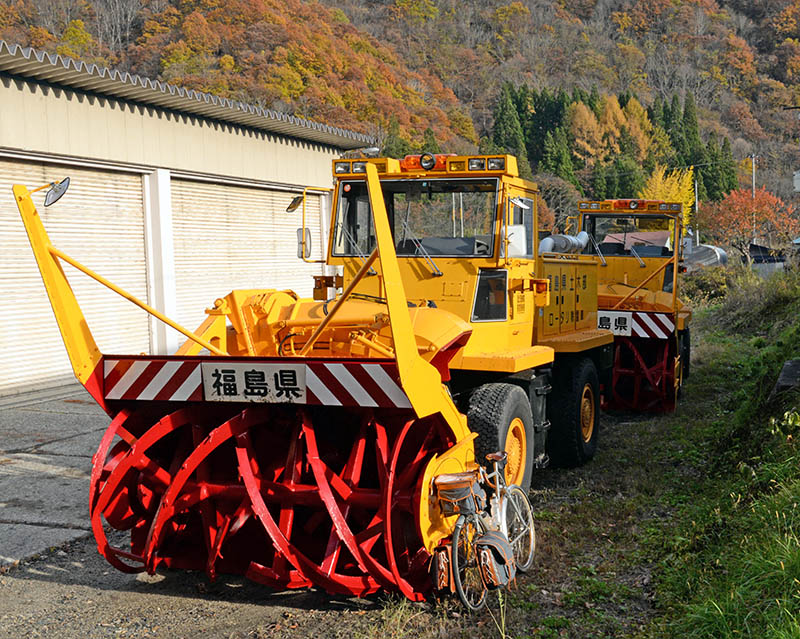
We could feel that the rains soon would turn to snow. In the villages, we had seen snowplows, freshly overhauled and repainted, standing by to keep the main roads open. The small roads we enjoy so much won’t be plowed – they will be closed until late spring.
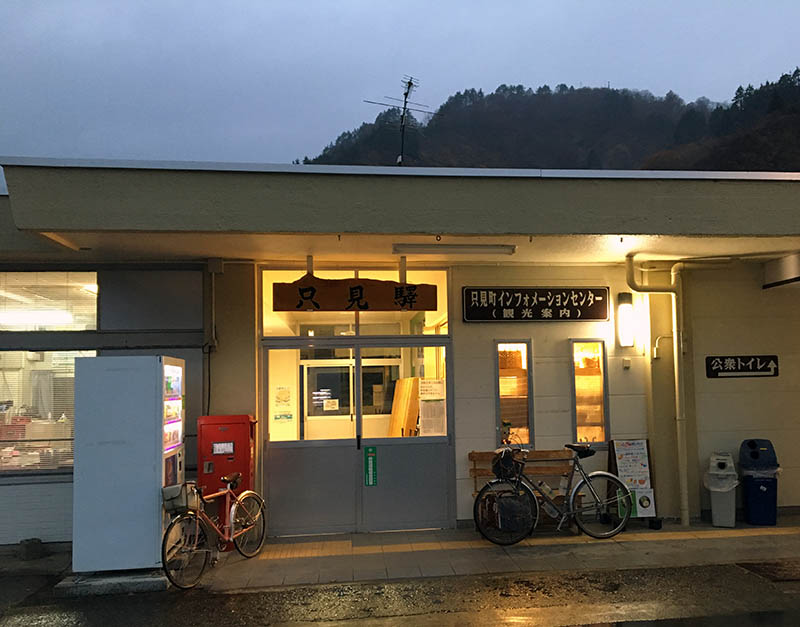
We reached the train station just as it got dark. We packed our bikes for the long trip back and then locked up our Rinko bags. We had intended to visit a public bath near the station, but today was the one day of the week when it was closed. So we went to a bakery instead.
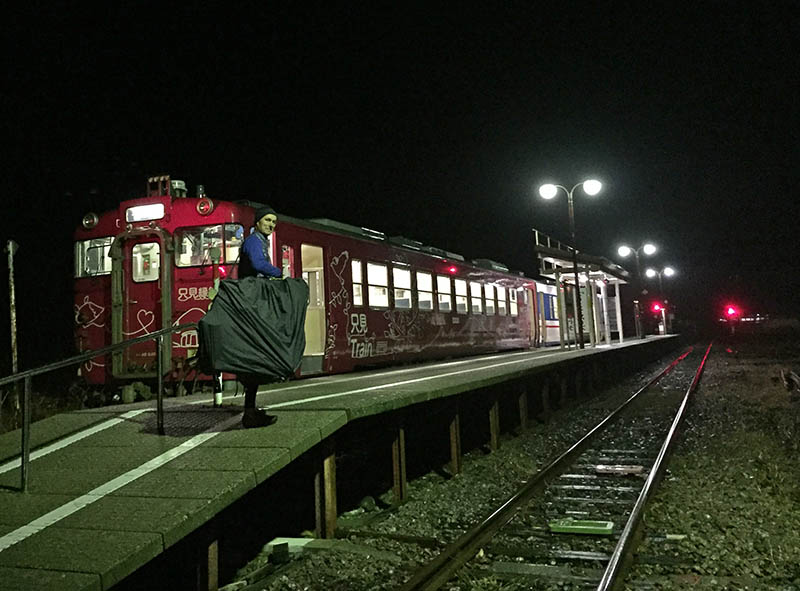
An hour later, our train arrived, and we boarded for the first leg of the trip back to Tokyo. It was a short tour, but our memories will last a long time.


